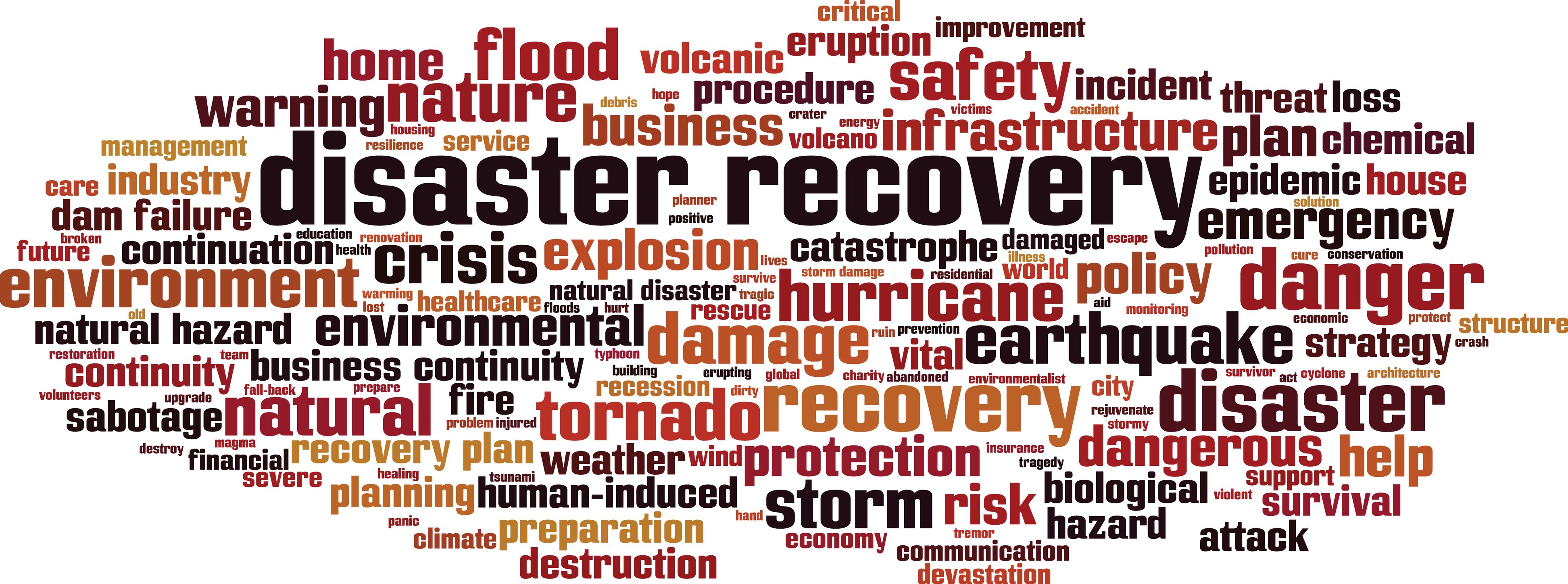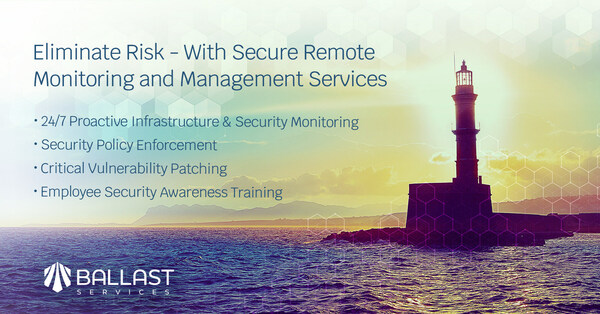Bracing for Impact: Navigating Disaster Recovery with Ballast Services
 Disaster does not discriminate based on geography or industry – it can strike any organization, at any time, in any form. Whether it’s a hurricane, tornado, Flooding, a successful ransomware attack, supply chain disruption, or extended power outage, businesses need to be prepared to ensure continuous operations even when disaster strikes. For example, Cybersecurity Ventures has modeled that a business fell victim to a ransomware attack every 11 seconds in 2021, up from every 14 seconds in 2019. The 2021 hurricane season alone caused an estimated $120 billion in storm damage, with businesses bearing a substantial portion of these costs. A business hit by a successful ransomware attack is sd under threat as a business in the middle of a hurricane, but the way a business responds to these threats is very different in both preparation and execution of Disaster Recover and Business Continuity. In this post, we explore how a resilient technology environment, along with robust disaster recovery (DR) processes, powered by an expert technology service partner like Ballast Services helps organizations mitigate disaster situations.
Disaster does not discriminate based on geography or industry – it can strike any organization, at any time, in any form. Whether it’s a hurricane, tornado, Flooding, a successful ransomware attack, supply chain disruption, or extended power outage, businesses need to be prepared to ensure continuous operations even when disaster strikes. For example, Cybersecurity Ventures has modeled that a business fell victim to a ransomware attack every 11 seconds in 2021, up from every 14 seconds in 2019. The 2021 hurricane season alone caused an estimated $120 billion in storm damage, with businesses bearing a substantial portion of these costs. A business hit by a successful ransomware attack is sd under threat as a business in the middle of a hurricane, but the way a business responds to these threats is very different in both preparation and execution of Disaster Recover and Business Continuity. In this post, we explore how a resilient technology environment, along with robust disaster recovery (DR) processes, powered by an expert technology service partner like Ballast Services helps organizations mitigate disaster situations.
Understanding the Risk: It's crucial to recognize that disruptions are a matter of 'when' not 'if'. According to a study by the Uptime Institute, almost one-third of all data centers experienced downtime in 2020, with an average recovery time of 130 minutes. Disasters can impact businesses in various ways, including:
- Direct damage to physical assets and infrastructure.
- Data breaches result in the loss of sensitive information.
- Operational disruptions lead to productivity losses and decreased revenue.
- Supply chain interruptions affect production and delivery systems and related processes.
Design and Implement a Resilient Infrastructure: Resilient businesses invest in robust infrastructure designs that can withstand, adapt to, and quickly recover from disruptions. Key elements include:
- Redundancy: Duplicate critical systems or data to reduce the impact of a failure. Redundancy ensures operations continue even if one part of the system fails. Cloud-based or hybrid solutions deliver the best value in 2023 but can be complex to design and implement a reliable and cost-effective solution.
- Fault Tolerance: Design systems to continue functioning even in the event of partial system failures. This includes both systems as well as data with separate backup and recovery strategies.
- Scalability: Implement technology systems that can quickly scale up or down based on demand to handle sudden changes or traffic spikes using virtualization or container-based services as well as scalable connectivity designs.
Implementing Adaptable Disaster Recovery Processes: While robust infrastructure can resist disruptions, adaptable DR processes ensure quick recovery when disruptions occur. Key steps include:
- Risk Assessment: Identify potential threats and evaluate their impact on operations.
- Business Continuity Planning: Develop strategies and processes to continue operations during and after a disaster, using Risk Assessment data as the guide.
- Regular Testing: Continually test both systems and the DR plan to ensure its effectiveness and make necessary adjustments based on the type of disaster.
- Employee Training and Communications: Regularly train employees to effectively respond to, communicate during, and recover from disruptions.
Partnering with Ballast Services: A key component of an effective disaster management strategy is partnering with a reliable technology service provider like Ballast Services. Here's how they can help:
- Expertise: Ballast Services provides the expert support needed to design, implement, and manage resilient systems and disaster recovery processes.
- Secure Managed Services: They offer a range of managed services, including data backup, network security, and cloud services, helping businesses maintain operations during disruptions.
- 24/7 Management Support: Their round-the-clock support ensures quick response and resolution of issues, reducing downtime and its impact on business operations.
A combination of robust infrastructure, adaptable DR processes, and the support of a technology service partner like Ballast Services can equip businesses with the resilience they need to survive and thrive amidst disruptions. Don't wait for the next disaster to strike – act now and protect your business with Ballast Services.
Modernize, Optimize, Stabilize, and Secure your organization today. Contact us at (888) 450-4322, visit our website at https://ballastservices.com, or click on Get In Touch to speak with us today.



